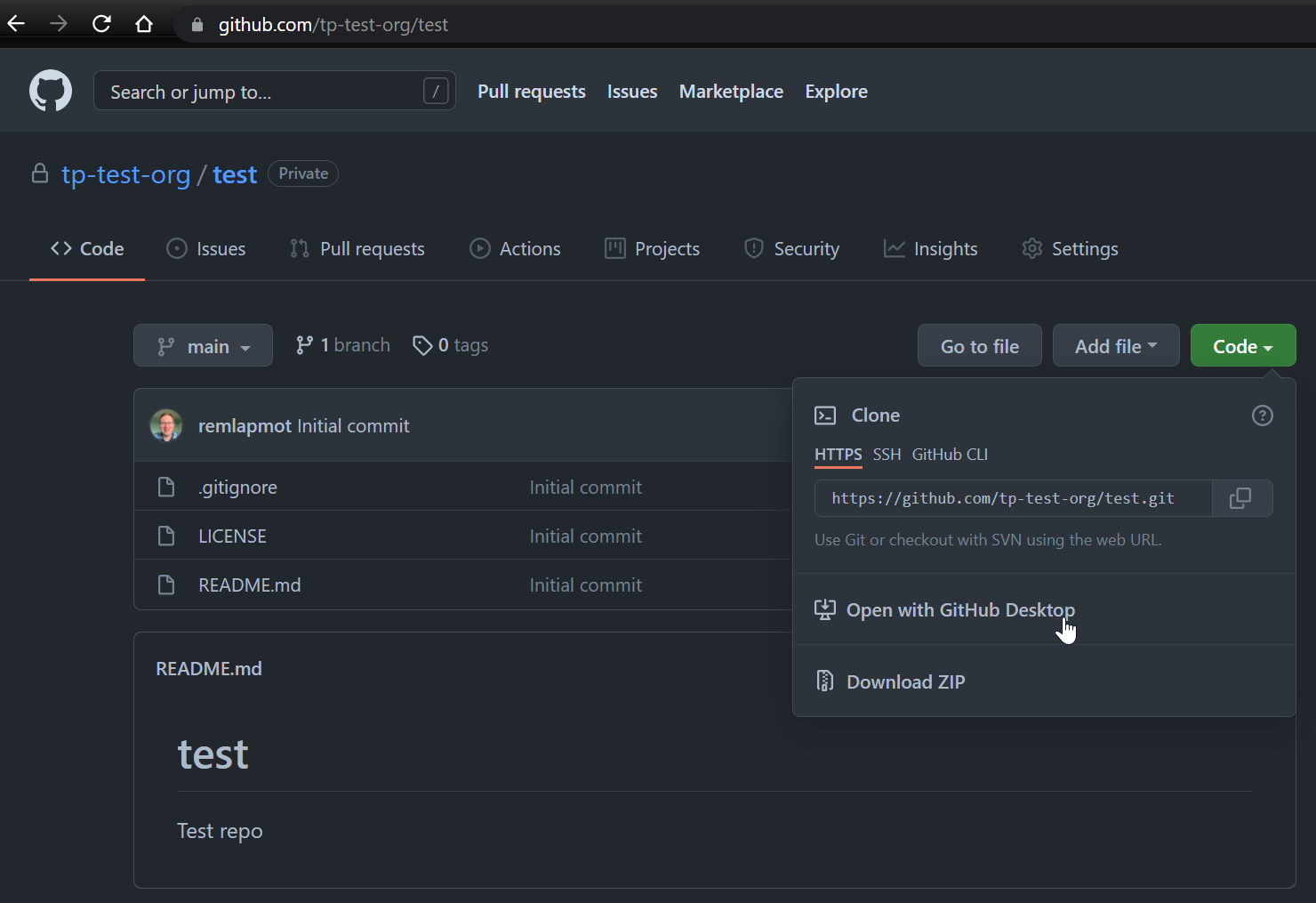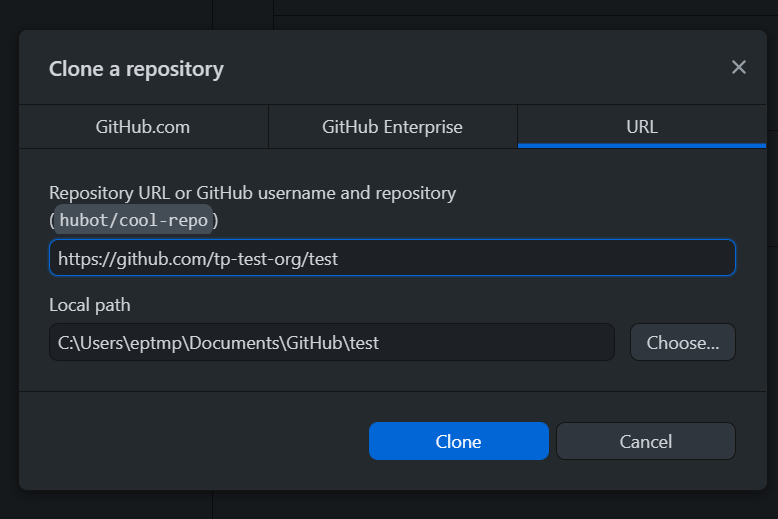
4 Git and GitHub Workflow
4.1 Standard GitHub workflow
- (I recommend to only fork a public repo if you intend to send a pull request to it)
- Fork the other person’s repo (this will be known as the
upstreamrepo from your fork, your copy of a repo on GitHub is known asorigin) - This creates a copy of their repo under your account (your fork)
- Clone your fork (the copy under your account) to your machine
- Create a new branch (do not work on
master/main) - Make your changes and commit them
- Push your new branch upto your GitHub (i.e., to your fork)
- Create a pull request (from your new branch) back to the default (
master/main) branch of the original repo
4.2 Workflow with an OpenSAFELY GitHub repo
- Skip the forking step from the standard GitHub workflow
- The repo on GitHub is known as
origin - Clone the repo to your local machine
Click:
Code|Open with GitHub DesktopClick
Clonein the box which appears in GitHub Desktop
Go to the Making a pull request page here